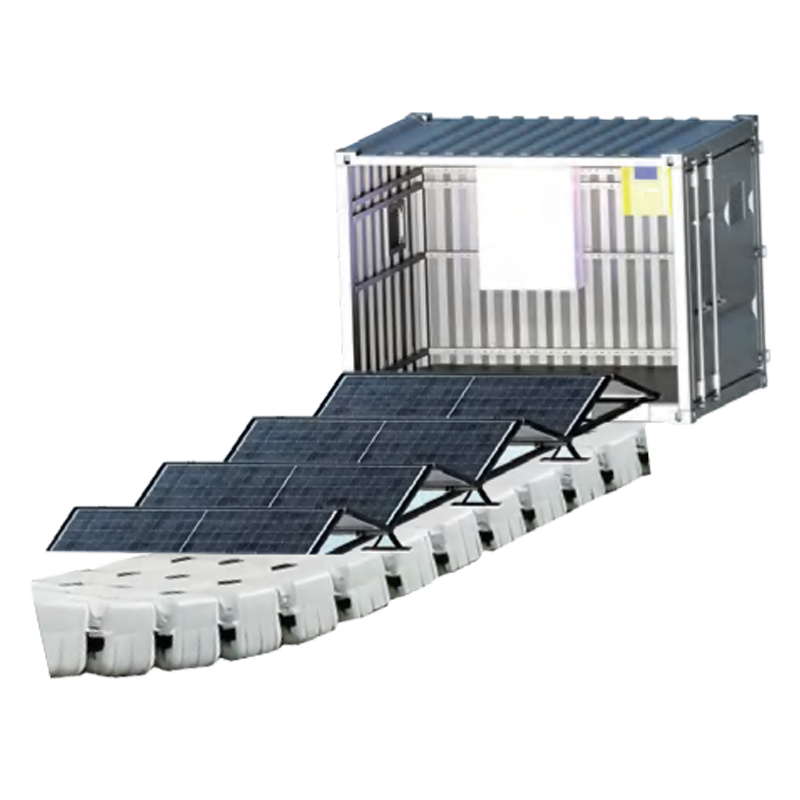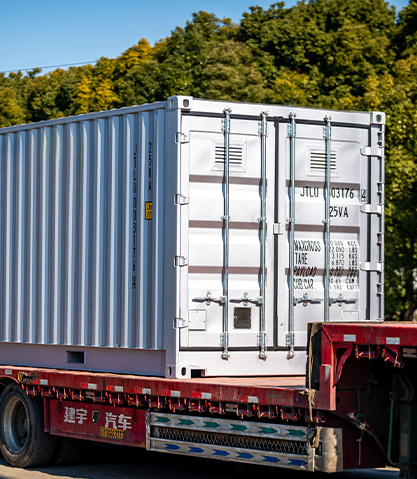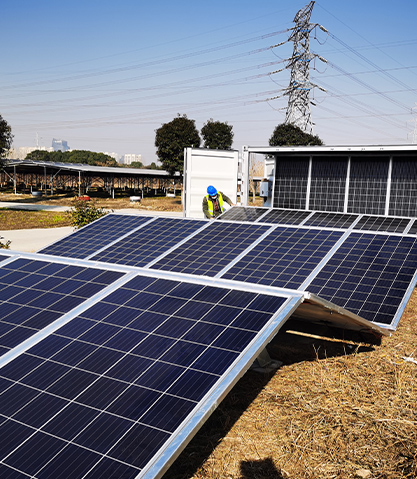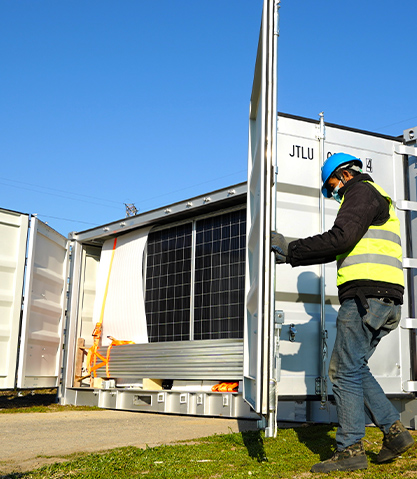Advancements in the efficiency of solar panels and battery storage technologies are significantly enhancing the performance and capabilities of solar power containers. These innovations are crucial for optimizing energy production, reducing costs, and improving the overall reliability of solar-powered systems in various applications. Here’s an overview of the key advancements:
Content
1. Increased Efficiency of Solar Panels
Several breakthroughs in solar panel technology are improving their efficiency, which is critical for maximizing energy production within the limited space of a solar power container:
-
Perovskite Solar Cells: Perovskite solar cells are emerging as a promising alternative to traditional silicon-based solar panels. These cells have the potential to significantly increase conversion efficiencies, with some laboratory prototypes already surpassing 30% efficiency. Perovskites are also lightweight, flexible, and can be manufactured at a lower cost, which makes them an ideal fit for portable solar power solutions like solar power containers.
-
Bifacial Solar Panels: Bifacial solar panels, which capture sunlight from both sides (front and rear), can increase energy generation by up to 30% compared to traditional panels. These panels are especially effective in environments where reflected light (such as from snow or white surfaces) can be harnessed. Incorporating bifacial panels in solar power containers allows for higher efficiency in a variety of environments.
-
Heterojunction Technology (HJT): HJT solar cells combine the benefits of both silicon and thin-film technology, offering higher efficiency and lower energy loss. They allow for better performance in lower light conditions and have a higher temperature tolerance, making them ideal for mobile and off-grid applications like solar power containers.
-
Tandem Solar Cells: Tandem solar cells stack multiple layers of different materials to absorb a wider spectrum of light, significantly improving conversion efficiency. Tandem cells, such as those combining perovskite and silicon, are being tested to achieve efficiencies above 30%, which would drastically increase the energy yield from the same surface area in solar power containers.
-
Light-Weight and Flexible Panels: Lightweight, flexible solar panels are being developed to improve the versatility of solar power containers. These panels are easier to deploy and transport, making them ideal for containerized applications that may need to be relocated or quickly set up in remote areas. They are also less prone to breakage, which improves the durability of solar power containers.
2. Advancements in Battery Storage Technology
Battery storage plays a vital role in solar power containers by storing excess energy generated during the day for use at night or during periods of high demand. Several advancements in battery technologies are improving their efficiency, lifespan, and cost-effectiveness:
-
Solid-State Batteries: Solid-state batteries are considered the next generation of energy storage technology. They offer higher energy densities, faster charging times, and greater safety compared to traditional lithium-ion batteries. With the potential for longer lifespans and better thermal stability, solid-state batteries could significantly enhance the energy storage capacity of solar power containers, making them more efficient and reliable.
-
Lithium Iron Phosphate (LiFePO4) Batteries: Lithium iron phosphate (LiFePO4) batteries are becoming more popular in solar energy storage due to their high thermal stability, safety, and longer cycle life compared to traditional lithium-ion batteries. LiFePO4 batteries are particularly advantageous for solar power containers used in off-grid or remote locations where high reliability is crucial.
-
Flow Batteries: Flow batteries, which use liquid electrolytes to store and release energy, are gaining traction due to their scalability and long cycle life. They are ideal for large-scale energy storage applications like solar power containers, where consistent energy supply and long-term reliability are important. Flow batteries also have a distinct advantage in terms of safety, as they are less prone to thermal runaway than traditional lithium-ion batteries.
-
Hybrid Energy Storage Systems: Hybrid energy storage systems combine different types of batteries (e.g., lithium-ion and flow batteries) to optimize energy storage and discharge characteristics. In solar power containers, these systems can be designed to balance fast-response, high-efficiency batteries with long-duration, high-capacity storage, ensuring more stable and cost-effective energy management.
-
Second-Life Batteries: Second-life batteries, typically sourced from electric vehicles (EVs), are being repurposed for energy storage in applications like solar power containers. These batteries, although used, still retain a significant portion of their energy capacity and can be used to store excess solar energy. The use of second-life batteries reduces costs and environmental impact while extending the life of the battery cells.
-
Advanced Battery Management Systems (BMS): The development of smarter Battery Management Systems (BMS) is improving the performance and safety of energy storage systems. These systems optimize charge/discharge cycles, monitor cell health, and enhance battery life by preventing overcharging or deep discharges. With advanced BMS, solar power containers can operate more efficiently and extend battery lifespan, leading to lower maintenance and replacement costs.

3. Integration of Energy Management Systems (EMS)
Modern solar power containers are increasingly incorporating Energy Management Systems (EMS) that allow for real-time monitoring, optimization, and control of both solar generation and energy storage. EMS enhances the efficiency of the entire system by:
-
Predicting energy demand and adjusting the charging/discharging cycles accordingly.
-
Optimizing battery performance based on weather forecasts and energy consumption patterns.
-
Allowing for remote monitoring and diagnostics, which reduces the need for manual intervention and improves reliability.
-
Facilitating integration with grid systems or other renewable sources (such as wind), enabling hybrid solutions that optimize energy flow between different sources.
4. Wireless Charging and Smart Charging Technology
For solar power containers, wireless charging technology is being explored as a way to make charging more efficient and flexible. With smart charging, energy storage systems can autonomously adjust their charge rates based on factors such as battery health, external temperature, and available solar energy, ensuring that batteries are charged optimally for both performance and longevity.
5. Thermal Management Innovations
Both solar panels and batteries are sensitive to temperature fluctuations, and extreme heat or cold can reduce their efficiency and lifespan. Advanced thermal management solutions, such as heat pipes, phase-change materials, and liquid cooling systems, are being integrated into solar power containers to maintain optimal operating temperatures for both panels and batteries, ensuring better performance and increased lifespan.

 English
English 中文简体
中文简体 عربى
عربى



